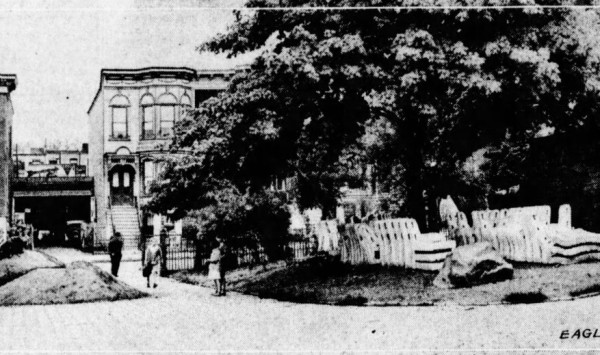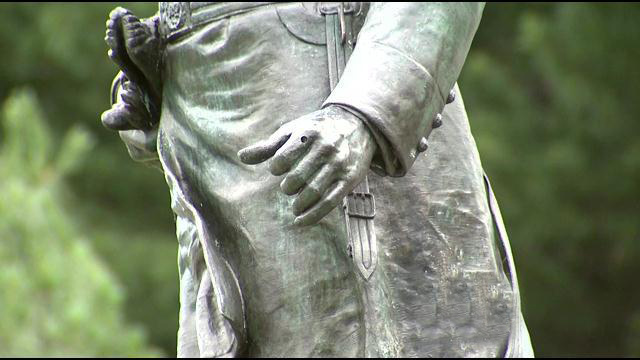MISCHIEVOUS BOYS, IRVING SQUARE (1931)

******************************************************************************************************************************** Brownstone Detectives investigates the history of our clients’ homes. The story you are about to read was composed from research conducted in the course of one of those investigations. Do you know the history of YOUR house? ******************************************************************************************************************************** There isn’t much little boy mischief that a Bushwick alderman, a beat cop, and a parks department official can’t handle. And all three were necessary to combat the troublesome striplings that were desecrating Irving Square Park during a renovation in 1931. “There’s not a shrub or a plant missing.” So explained Thomas J. Larney, park keeper for Irving Square Park in Bushwick, in his lilted Irish brogue. “The gardener counts up every week and there’s nothing missing. And there are plenty of seats for people to sit down on.” Larney was responding to public criticisms of a project in the park that was supposed to have ended long ago. Construction equipment, concrete park bench forms, bunches of plants and shrubbery, and piles of dirt, though, still obstructed residents’ enjoyment of the public space. He apparently saw the little mischief-makers, though, as no concern to the project, not even mentioning their after-dark activities. The bigger picture, of course, was just a bit more complicated. A series of unavoidable delays was keeping the contractor from finishing his work. These delays were causing conditions in the park which gave the local residents grief. And the continuation of these conditions presented targets of opportunity for the local miniature scalawags, who would “knock over some of […]
THE SECOND HUMILIATION OF WARREN (1960)

A number of New York City Parks Department statues are having their stolen swords replaced reported a DNAInfo story. The statues, most of which have had their their swords stolen (bayonets, and glasses, in some instances) during times of high crime, are now deemed worthy of replicas being cast. The Parks Department worries less now about the replicas being stolen themselves. I’ve often noticed one such statue in particular – the Kemble Warren statue at the Grand Army Plaza. First of all, why was it there? What had Warren, an engineer, done that could have been so critical to the war effort? Had he been a critical part of the attack at any actual battle? I figured that, as an engineer, he had – more likely – prepared a defense. But was that enough to receive a statue? KEMBLE WARREN – A HUMILIATION Gouverneur Kemble Warren, the engineer for whom the statue at the Grand Army Plaza had been cast and dedicated, had been known for his heroism at Gettysburg. By the time that General Philip Sheridan had begun his “burning of the Shenandoah Valley,” though, Warren had been castigated by, what Sheridan referred to as, a critical slowness in arriving to a certain battle. Because of this, Warren had been relived of duty by the general (an action supported by General Grant, at the time) and assigned to another, less critical, theater of battle. The humiliation of the relief of command, though, had already had its effect. After some […]